vex·il·lol·o·gist [noun] - 1. one who studies and collects of information about flags.
ses·qui·pe·da·li·an [adjective] - 1. one given to using long words containing many syllables.
sup·po·si·tious [adjective] - 1. formed from or growing out of supposition: suppositious evidence.
(These definitions are from Dictionary.com)
|
Backdating Flags and Rewriting Flag History
One of the biggest problems the serious vexillologist faces is that many times documentation doesn't support popular traditions and beliefs about the nature of historical flags. Worse yet, it doesn't support many family beliefs about their own family traditions. Many times a family finds a flag preserved by a family ancestor, and down through the generations mistaken information about the origins of their flags become beliefs, and the results are that flags really from the War of 1812 somehow become American Revolutionary flags, to give an example. Flag historians are guilty of the same thing and unfortunately any misinformation, if repeated enough times, becomes belief. My vexillologist friend James Ferrigan, a bit of a sesquipedalian, introduced me to the term suppositious when talking about flags - meaning flags or flag stories that are based on errors repeated so often they become accepted as fact. He tells me he first heard the term suppositious used in connection with flags from another vexillologist named William Crampton at the San Antonio NAVA meeting in 1992. I have adopted the term here and plan to discuss briefly a few suppositious flags and flag legends below to clarify the meaning.

The "Easton" Flag 1776?
The local suppositious legend about this flag is that it was displayed on July 8, 1776, for the first public reading of the Declaration of Independence in Easton, Pennsylvania, by Robert Levers. However, in reality, it was the company colors of Captain Abraham Horn's Militia Company from Easton which fought during the War of 1812. The original survives at the Easton Public Library.
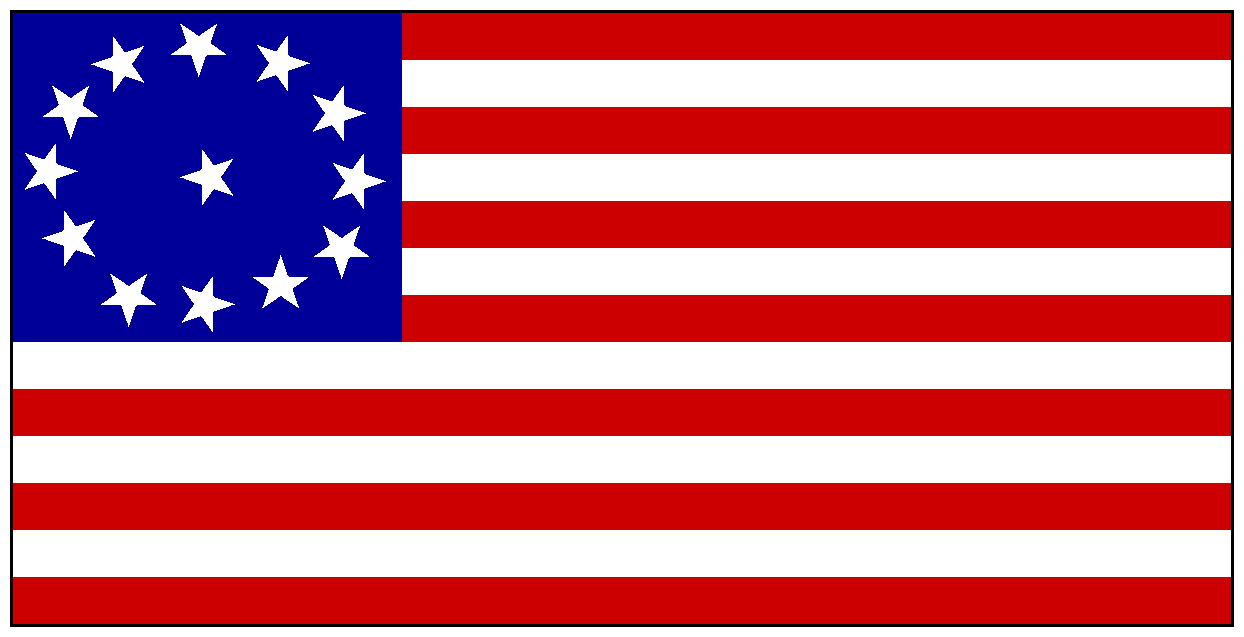
The "Cowpens" Flag 1781?
The Cowpens Flag, according to its suppositious legend, was carried at the Battle of Cowpens and was the regimental flag of the Third Maryland Regiment, but unfortunately, this unit had been disbanded prior to the battle. The flag was actually first carried by Joshua F. Batchelor at the Battle of North Point during the War of 1812. The original flag, complete with bullet holes, is still stored in the State House in Annapolis, Maryland. The famous "Spirit of '76" painting by Archibald MacNeal Willard actually features the "North Point" flag, not the Betsy Ross design, which is similar. The painter made his painting in 1875, another victim of suppositious information.
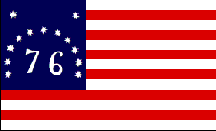
The "Bennington" Flag 1777?
The suppositious version of this flag gives Colonial Stark’s wife, Molly Stark, credit for making this flag for her husband's use at the Battle of Bennington. Unfortunately, the cotton material and thread used to make the flag dates it more closely to the War of 1812. Most flag historians now believe that it was made by Nathaniel Fillmore (a veteran of the Battle of Bennington) for his son Colonel Septa Filmore and the New York/Vermont militia. It was used at the Battle of Plattsburg (Lake Champlain) in 1814, a battle considered by many as the turning point of the War of 1812.
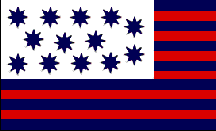
The "Guilford Courthouse" Flag 1781?
This unique looking Flag has a suppositious tradition placing it at the Battle of Guilford Courthouse during the American Revolution, but recent research now dates this flag between 1812-1814, thus making it more likely a North Carolina militia flag carried in the War of 1812, rather than a Revolutionary War flag as tradition previously believed.
Other interesting American flags one could use as examples would be the well-known "Betsy Ross" flag and the "First Continental Navy Jack," both of which are discussed in detail elsewhere on this website.
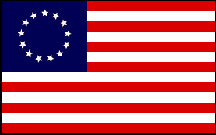
The "Betsy Ross" Flag 1776?
It is at this point, I think we also need to distinguish between suppositious flags and the suppositious stories attached to those flags. The "Betsy Ross" flag, for example, is now so surrounded in myth that the truth may be impossible to unravel, but there is a drawing of an unidentified flag with a single ring of stars in its canton that was made in 1782. The traditional design is, therefore, a known Revolutionary era variant, so the flag is not suppositious, just the stories told about it. Perhaps Betsy did design it, but the necessary documentation to prove it has never been found.
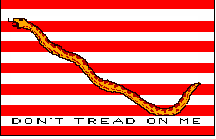
The "Rattlesnake Jack" 1775?
The "First Continental Navy Jack" presents yet another interesting case because it may have for a time been a suppositious flag (c1876 to 1976), but during the Bicentennial Era, it became quite real, becoming known as "The Rattlesnake Jack," and the official jack of the U.S. Navy. From 1977 to 2002, it was also the "Jack of Honor" worn by the ship longest in commission in the United States Navy; and since Sept 11, 2002, it was restored as the modern Jack of the U.S. Navy for the duration of the Global War on Terror. So the Rattlesnake Jack is now quite real, even if it cannot be documented back to the Revolutionary War.
This all said, how do these stories about the origins of flags become so mixed up in family histories? Human nature, an old flag is found, and a son asks a father a question. His father says, "I think this was your great grandfather's and did you know he fought in the Revolutionary War?" That son passes down the story with embellishments, and a family legend is born; a flag with an honorable story of its own is backdated to an earlier time and eventually the false story becomes the accepted one. The flag is later presented to a museum or State archive with the supposed history attached, and another suppositious flag legend is born.
One last point, regarding the so-called suppositious flags I've mentioned in this short article, I do not consider any of them only suppositious. True, because of more recent scholarship, we now believe some of them to be backdated; but the flags are not suppositious, they are very real. At best, what is suppositious are the "facts" and stories surrounding these flags, not the flags themselves.
|